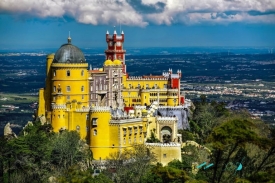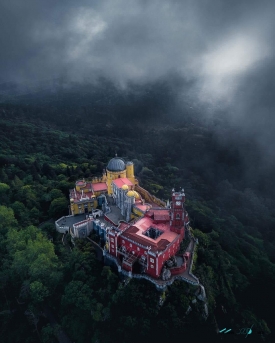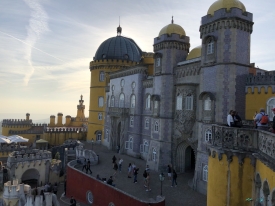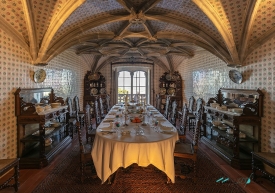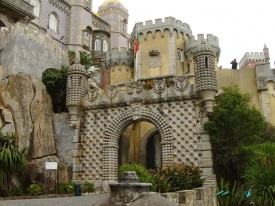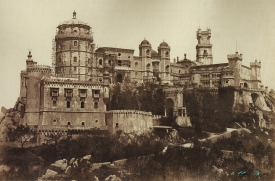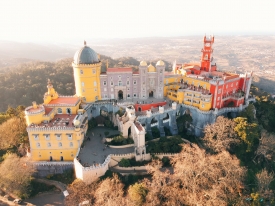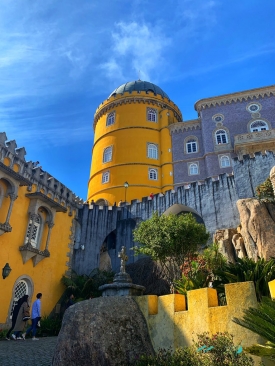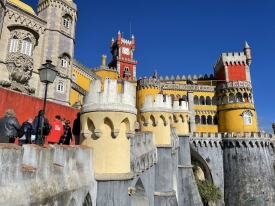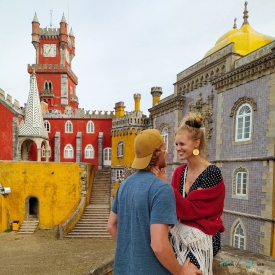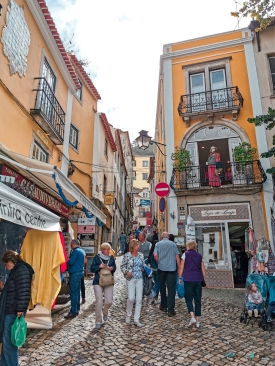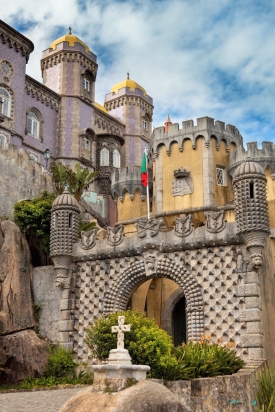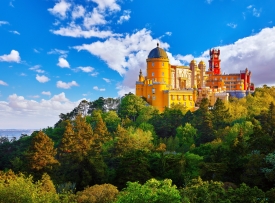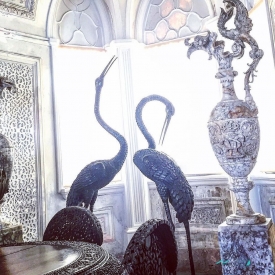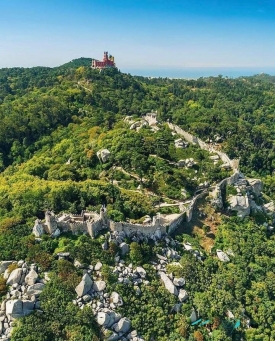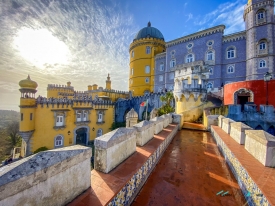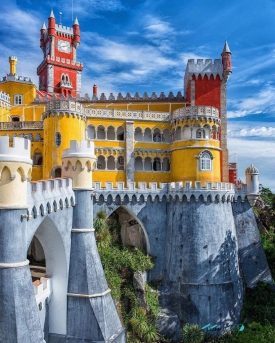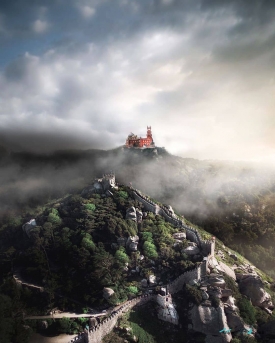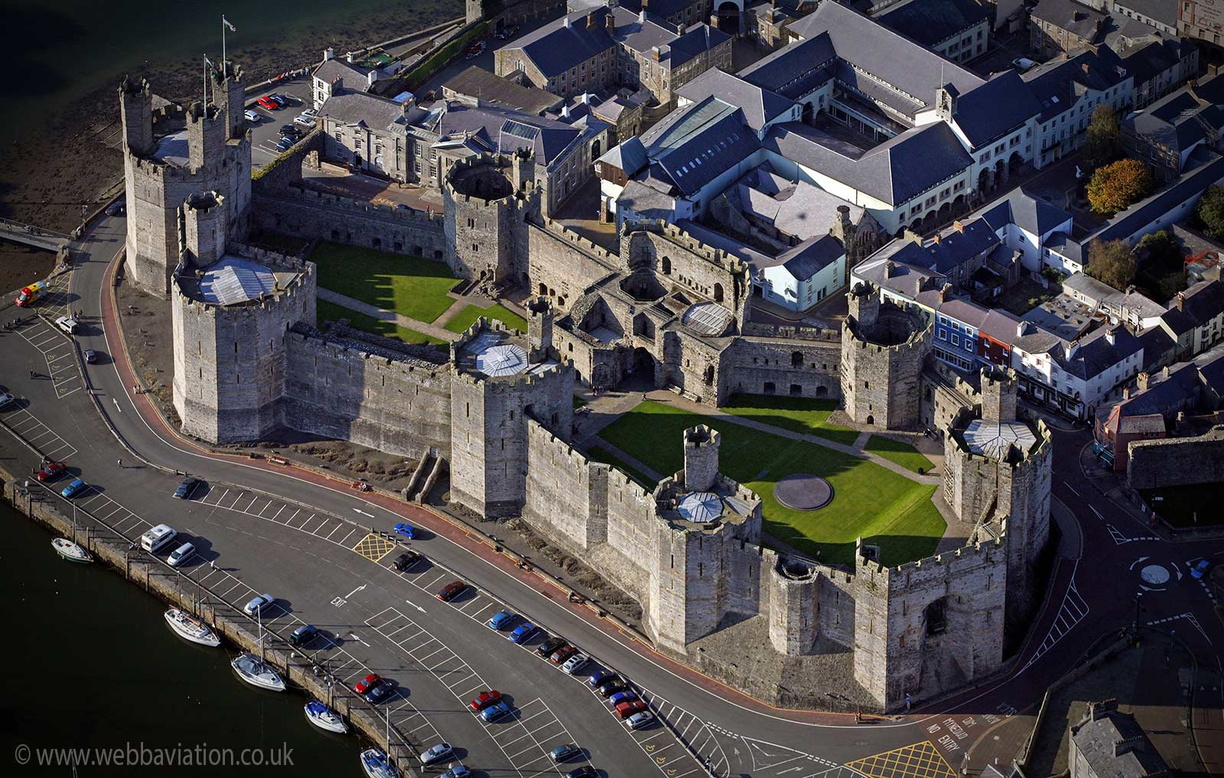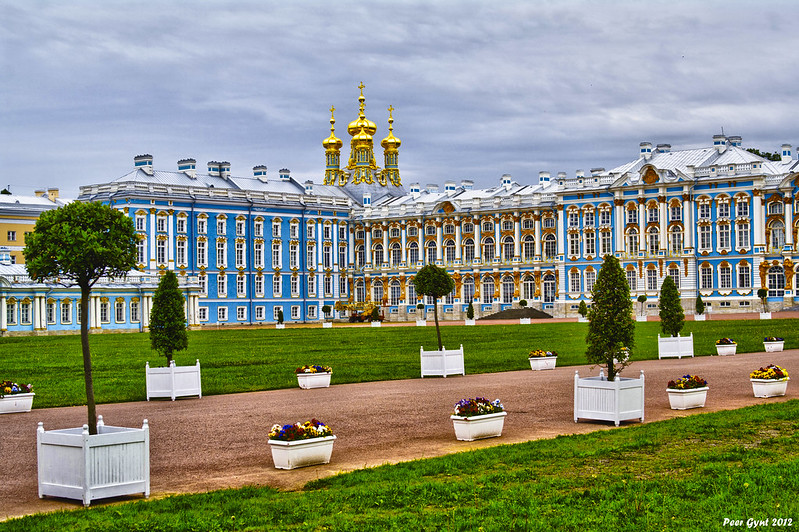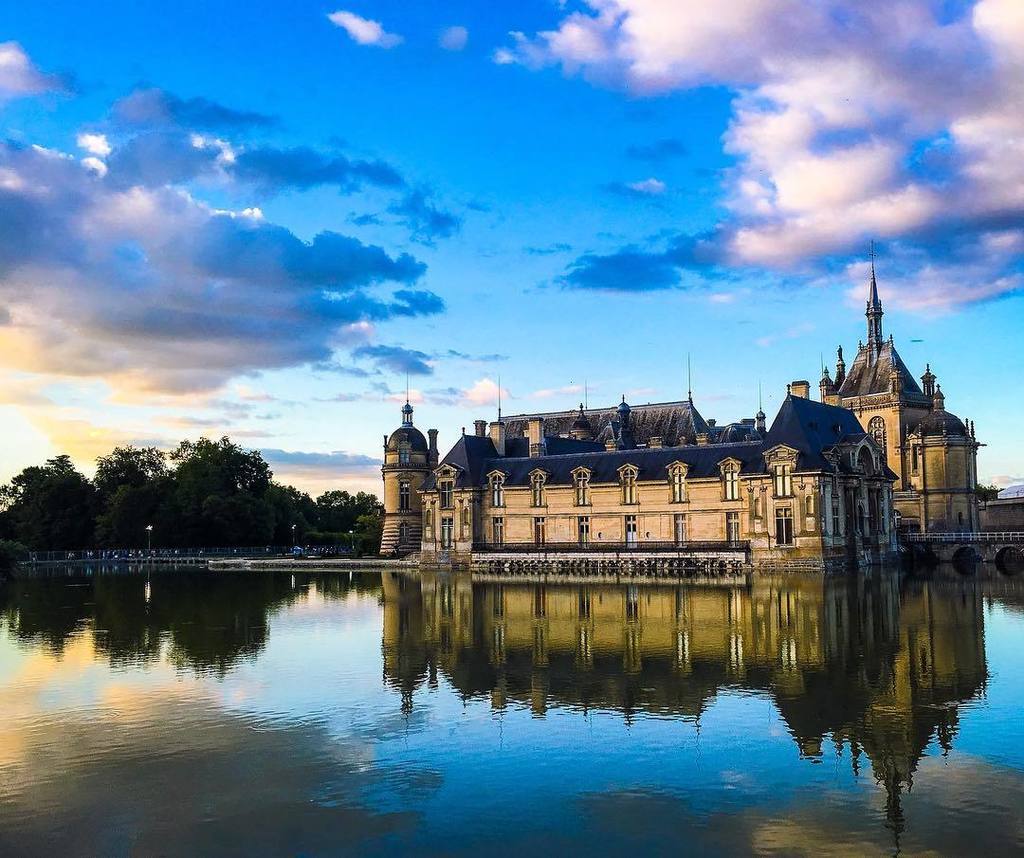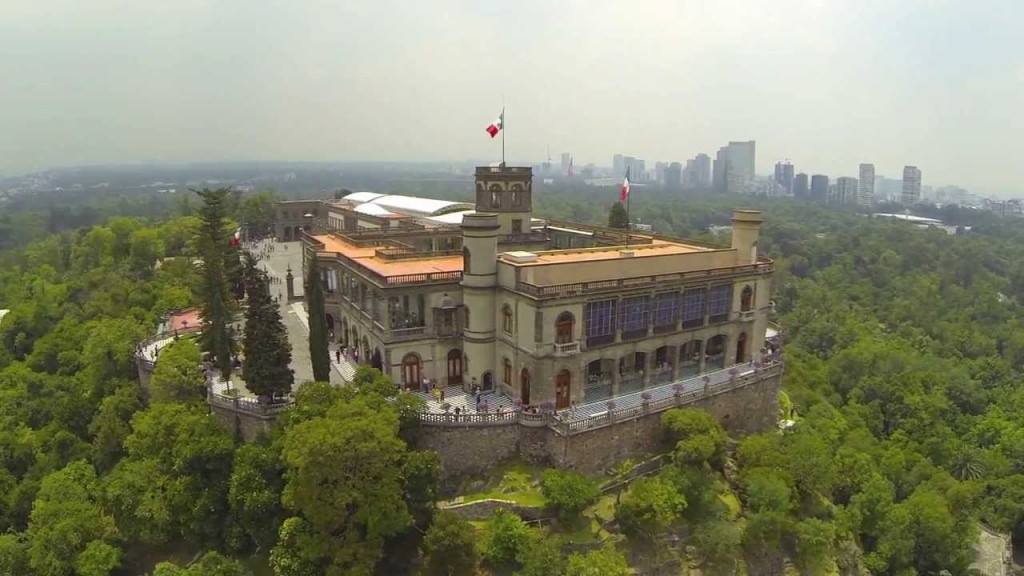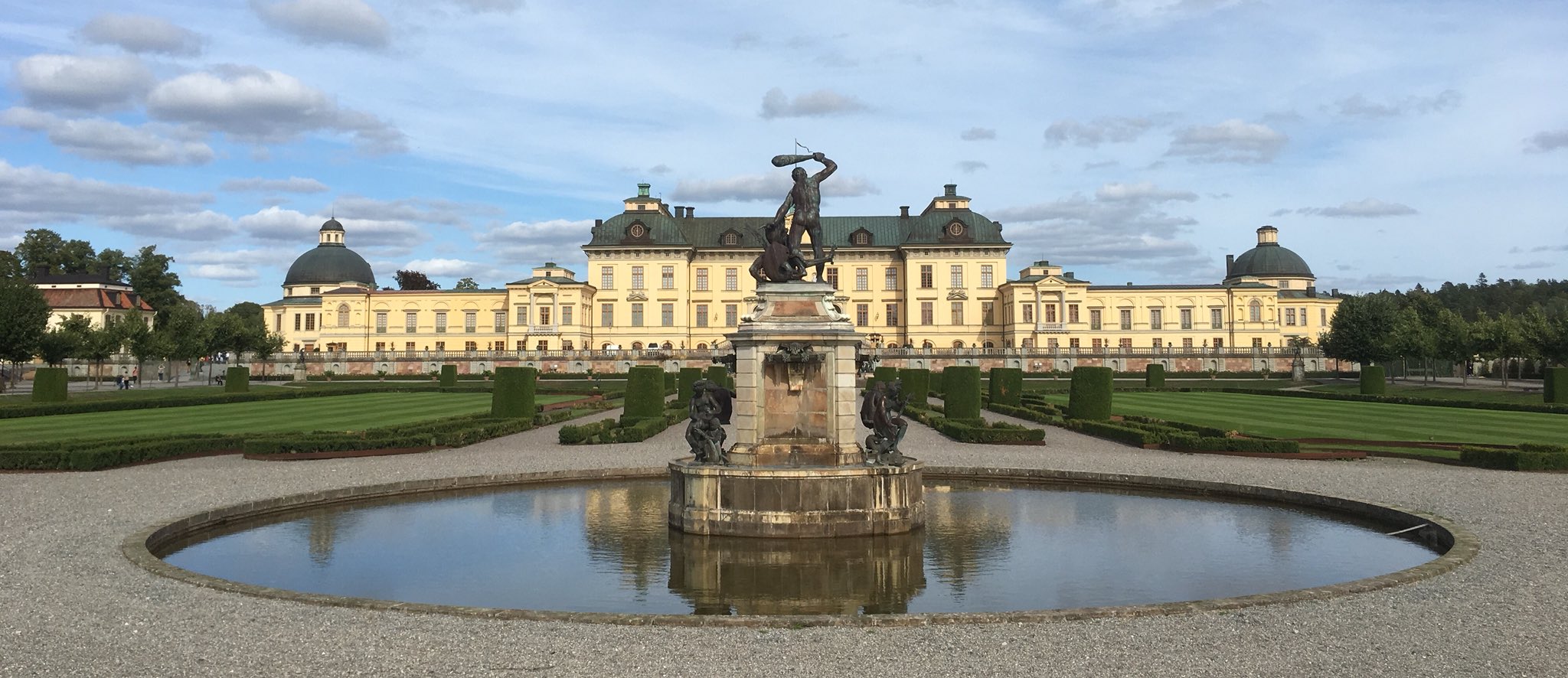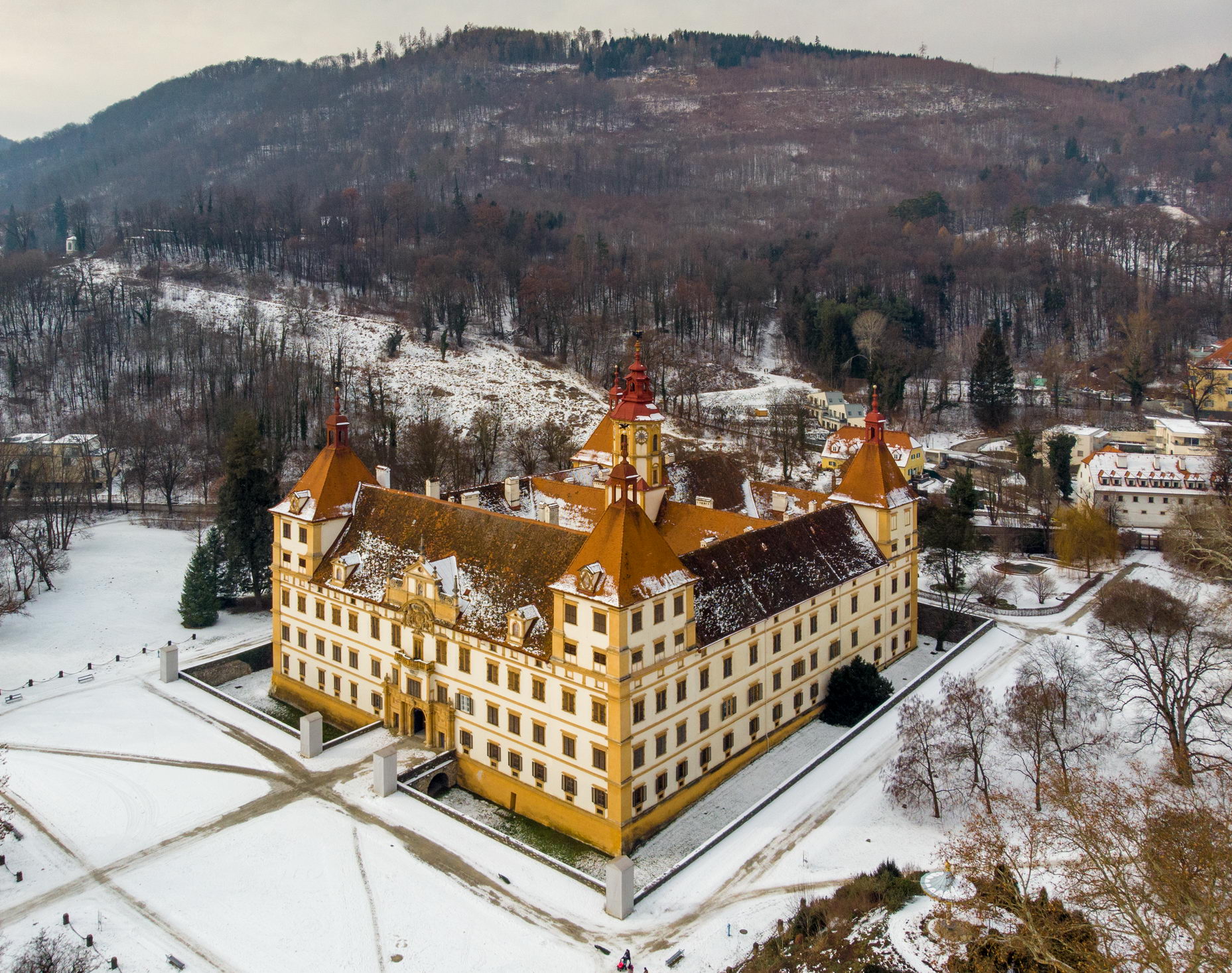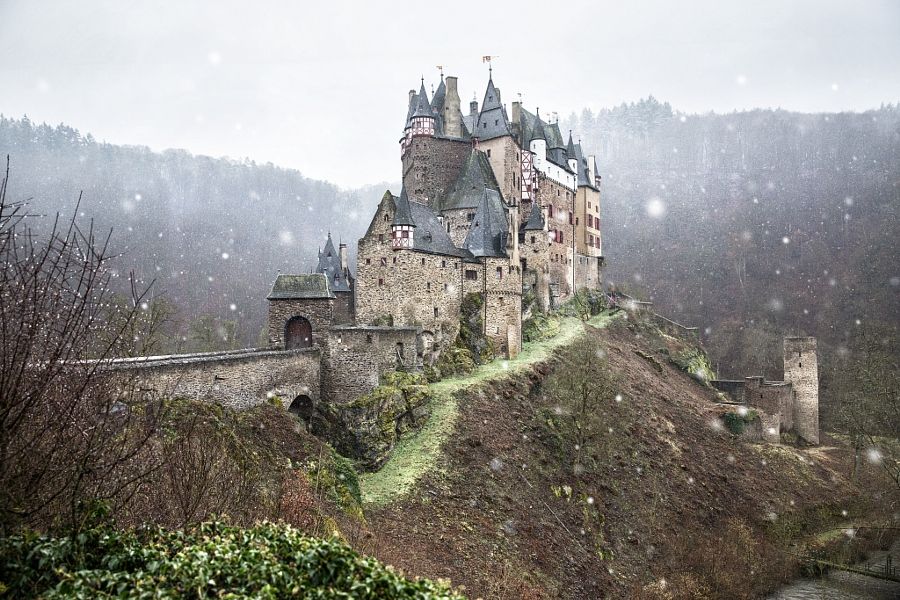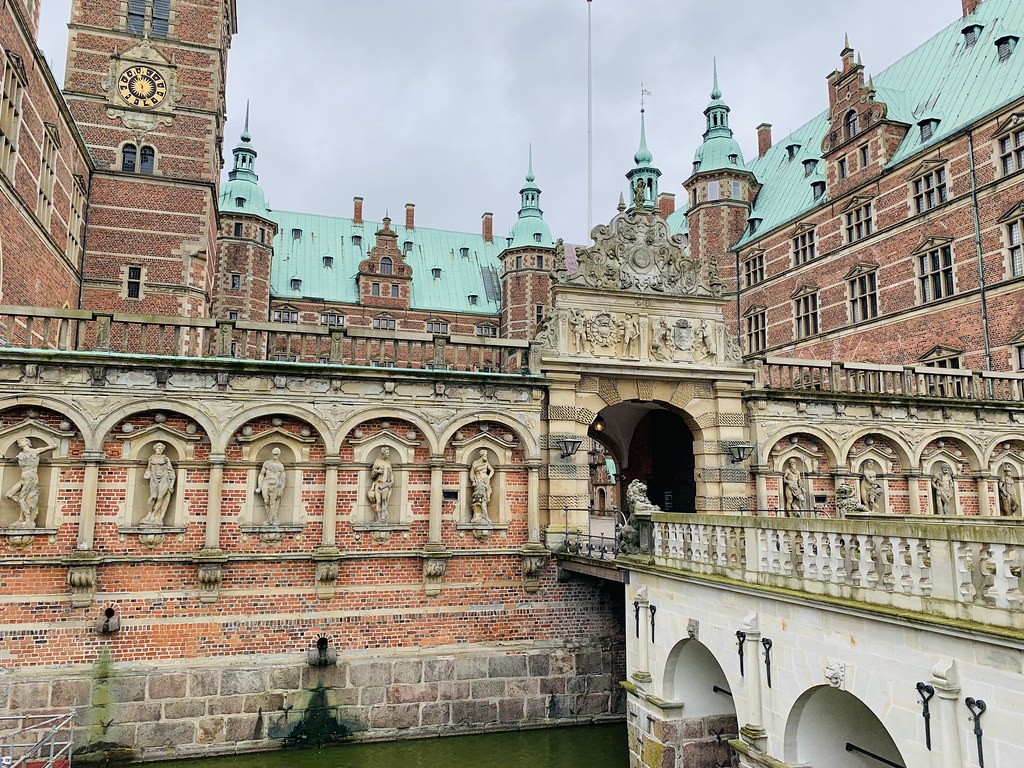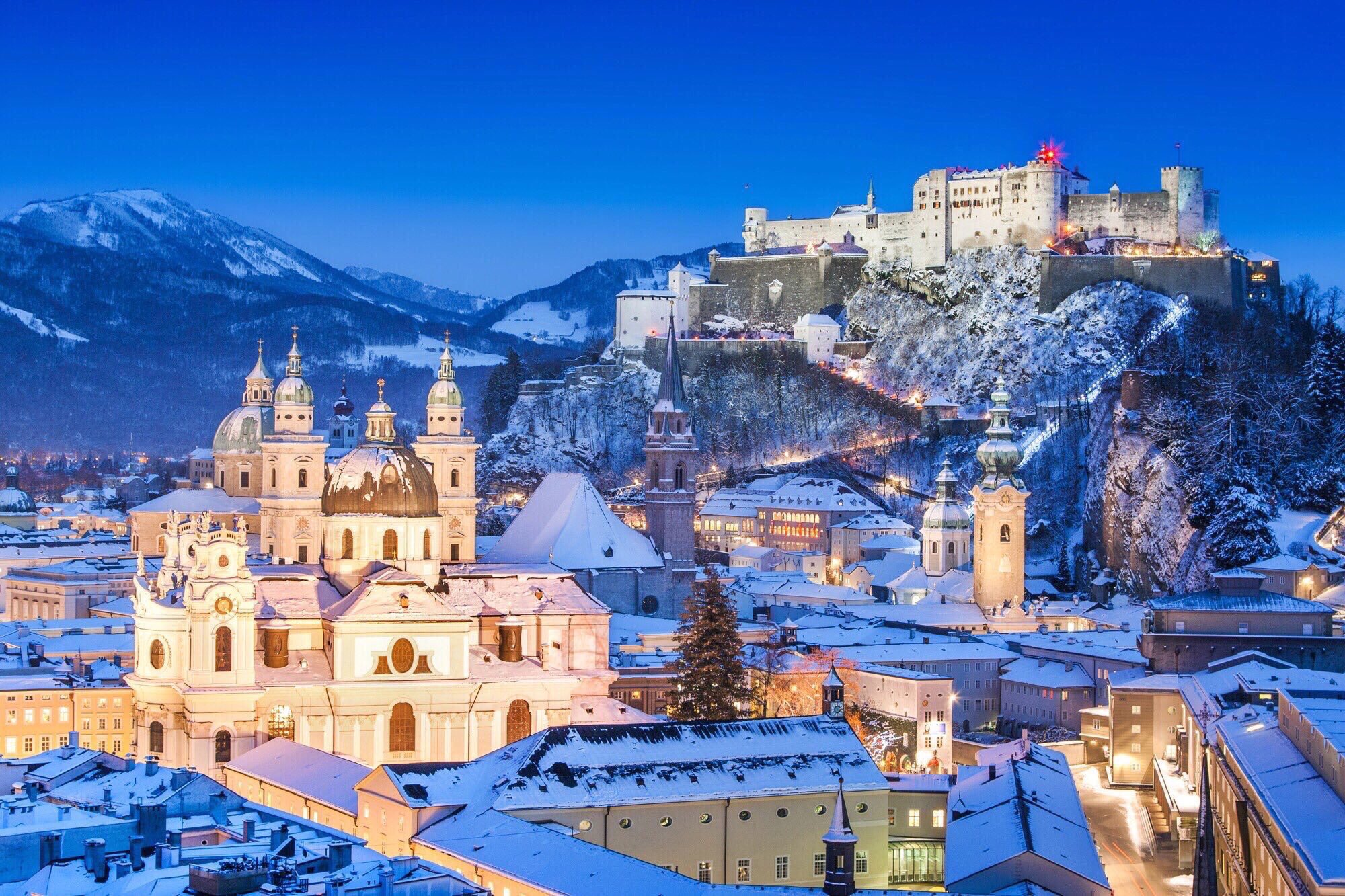The Pena National Palace, popularly known as Pena Palace or Pena Castle, is located in the town of Sintra, São Pedro de Penaferrim, municipality of Sintra, in the district of Lisbon, Portugal. It represents one of the main expressions of 19th-century architectural romanticism in the world, constituting the first palace of this style in Europe, built some 30 years before Neuschwanstein Castle in Bavaria.
On July 7, 2007, it was chosen as one of the Seven Wonders of Portugal. The palace has been open for tourist visits since 2013, being one of the most visited sites in the country. The Palacio da Pena was classified as a World Heritage Site by UNESCO in 1995.
The occupation of the steep top of the Sintra mountain range, where the current palace is located, occurred with the construction of a small chapel of Nossa Senhora da Pena, during the reign of João II of Portugal. In the 16th century, Manuel I of Portugal, fulfilling a promise, ordered its reconstruction from scratch. He donated it to the Order of Saint Jerome, determining the construction of a wooden convent, and replacing it, shortly after, with a stone building to house 18 monks.
In the 18th century, a lightning strike destroyed part of the tower, the chapel and the sacristy, damage that was aggravated by the earthquake of 1755, which left the convent in ruins. Only the area of the main altar, in the chapel, with a marble and alabaster altarpiece attributed to Nicolás de Chanterenne, remained intact.
In the 19th century, the landscape of the Sintra mountains and the ruins of the old convent amazed the king consort Ferdinand II of Portugal. In 1838 he decided to acquire the old convent, the fence that surrounds it, the Castle of the Moors and the surrounding farmhouses and forests.
As for the area of the old convent, he promoted several restoration works, with the aim of turning the building into his future summer residence. The new project was entrusted to the German mineralogist Baron von Eschwege, an amateur architect. A widely traveled man, Eschwege, born in Hesse, should have known, at least in draft form, the works that Frederick William IV of Prussia had undertaken with Schinkel's competition on the Rhine Castles.
In Sintra, the work progressed rapidly and the work was almost finished in 1847, according to the German project, but with decisive interventions regarding the decorative and symbolic details of the king consort. Many of the details, in the constructive and decorative plans, were due to the romantic temperament of the monarch himself who, together with pointed arches, towers of medieval suggestion and elements of Arab inspiration, designed and reproduced, on the north façade of the Palace, an imitation of the Chapter of the Convent of Christ in Tomar.
After Fernando's death, the palace was left in the hands of his second wife, Elisa Hendler, Countess of Edla, which at the time generated great public controversy, since the historic building was already considered a monument. Fernando's widow then sought to reach an agreement with the Portuguese State and received a purchase proposal from Luís I of Portugal, in 1889, on behalf of the State, which she accepted, reserving then only the Chalé da Condessa, where she continued to reside.
During the reign of Carlos I of Portugal, the Royal Family frequently occupied the palace, becoming the favorite residence of Queen Amélia, who was in charge of the decoration of the intimate rooms. Lunch was served here to the entourage of Edward VII of the United Kingdom, during his official visit to the country in 1903.
After her regicide, Queen Amelia retreated further into the Palacio da Pena, surrounded by friends and her dogs. Here he was frequently visited by her son, Manuel II of Portugal, who had his rooms reserved there. When the revolt broke out on October 4, 1910, Amélia waited in Pena for the situation to evolve, arriving with her entourage to go up to the terraces to observe signs of the fighting in Lisbon. The next day, she left to meet Manuel in Mafra, returning that same afternoon to the Pena Palace, where she spent the night of October 4-5, the last night she spent in Portugal before the fall of the Monarchy. The next day, knowing the triumph of the Republic, she left again for Mafra, to meet her son and her mother-in-law, from where they would all go into exile.
With the establishment of the Portuguese Republic, the palace became a museum, with the official designation of Palacio Nacional da Pena. In 1945, Queen Amélia, visiting Portugal, returned to the Palacio da Pena, where she asked to be alone for a few minutes: it was her favorite palace.
Almost the entire Palace is built on huge rocks, and the mix of styles it presents (Neo-Gothic, Neo-Manueline, Neo-Islamic, Neo-Renaissance, with other artistic proposals such as the Indiana) is truly intentional, to the extent that the romantic mentality of the 19th century is influenced by the fascination with the exotic.
Meilleures photos
Palais national de PenaVideos












